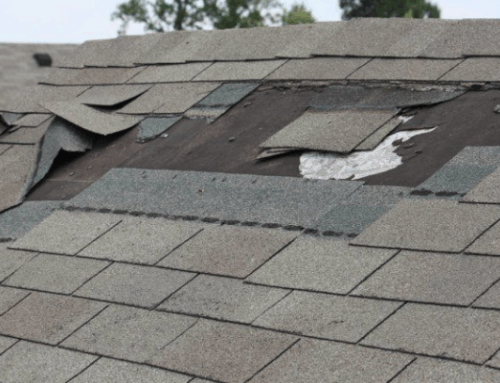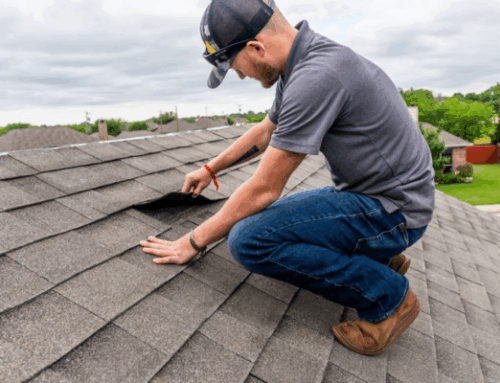The roof over your head is one of the most important components of your home, protecting you and your family from the elements. However, roofs don’t last forever and eventually need repair or replacement. Catching roof issues early can prevent much costlier damage down the road. That’s why it’s crucial to have your roof professionally inspected on a regular basis. But when is the ideal time for a roof inspection?
Many roofing experts recommend getting your roof inspected at least once a year. However, the best time of year for this annual check-up can vary based on your climate and the type of roofing material you have. For example, fall is an excellent time in many regions since any damage caused by summer storms will be visible and it allows time to make repairs before winter arrives. Spring can also be a good opportunity after the harsh winter months.
In this blog post, we’ll explore the ideal timing for roof inspections based on your location, roofing type, and other key factors. We’ll also cover what’s involved in a professional roof inspection and signs that your roof may need attention. With this knowledge, you can stay ahead of potential problems and get the maximum life span from your roof.
Why Fall is Often the Best Time for Roof Inspections
The autumn months are widely considered an ideal time for homeowners in many regions to schedule a professional roof inspection. There are several reasons for this:
- Damage from summer storms is visible – Summer can bring intense thunderstorms, high winds, hail, and fallen branches that may impact your roof. By fall, any issues caused by this summer weather will be apparent to an inspector.
- Allows time for repairs before winter – If any problems are discovered during a fall roof check, there is usually enough time to schedule repairs or replacements before cold winter weather arrives. This avoids having to do work in harsh conditions.
- Cooler temperatures make working conditions better – Fall brings milder temperatures compared to summer’s heat. This makes it safer and more comfortable for roofing professionals to inspect and perform any needed repairs or replacements.
The Benefits of Spring Roof Inspections
While fall tends to be most popular, spring can also be an excellent time for a roof inspection depending on your climate:
- Check for winter damage like ice dams or leaks – Winter conditions like snow, ice, and freezing temperatures can do a number on roofs. A spring inspection allows you to assess any damage caused by winter weather.
- Prepare roof for hot summer months – Just as a tune-up for your AC unit is wise before summer’s heat, a roof inspection ensures it’s in good shape for the rough summer months ahead.
- Get repairs done before the stormy season – Many regions experience increased thunderstorm activity in summer. Taking care of any roof issues in spring protects before this stormy period.
Consider Your Climate
The ideal roof inspection timing can vary based on the typical weather patterns in your local area:
- In very warm regions, late fall or winter may be better – For homeowners in hot desert climates, postponing inspections until later fall or even winter may be preferable when temperatures are more moderate.
- Cold winter areas should avoid inspections during snow/ice – If you reside in a place with harsh, snowy winters, scheduling inspections before or after is best to allow clear access to the roof.
- Account for typical storm seasons in your area – Whether it’s hurricane season along coastal areas or tornado season in the heartland, try to schedule inspections for periods least likely to involve severe weather events.
Factor in Roofing Material
The specific type of roofing material on your home can also influence the optimal timing for inspections:
- Asphalt shingles – This ubiquitous roofing material should be inspected in late spring or early fall in most climates. Avoid high heat or cold temperatures.
- Wood shakes/shingles – Since these can deteriorate faster than other materials, wood roofs likely need inspections twice a year – in spring and fall.
- Metal roofing – Premium metal roofs require less frequent inspections, perhaps just annually during a temperature-friendly period.
- Tile/slate roofs – With their long lifespan, these roofs can often get by with inspections every 2-3 years, scheduled for times of mild weather.
Don’t Ignore Clear Warning Signs
Even if an annual or bi-annual inspection isn’t yet due, some red flags mean you should call in professionals promptly:
- Leaks or moisture entering attic/home – This is a sure sign that inspection and repairs are urgently needed.
- Shingles or tiles are cracked, buckled, or missing – When roofing pieces are damaged or displaced, it leave the understructure exposed.
- Sagging or bowing sections of the roof – Indicates serious structural concerns that need immediate evaluation.
- Clogged or slow-draining gutters – Can lead to moisture buildup that damages roofing materials over time.
What’s Involved in a Professional Roof Inspection
When you hire a reputable roofing contractor, their comprehensive inspection should include:
- Examining the overall roof structure for defects or sagging areas.
- Checking flashing around vents, skylights, and chimneys for proper sealing.
- Looking for any gaps, cracks, or deterioration in roofing materials.
Signs You May Need Roof Repair or Replacement
During the inspection, roofing pros will determine if any repairs are required or if the roof has reached the end of its lifespan and needs full replacement. Issues that may necessitate work include:
- Missing, cracked, curled, or bald shingles/tiles.
- Excessive granule loss from asphalt shingles.
- Rusted, corroded, or deteriorated flashing.
- Signs of moisture intrusion or rot.
- Age of roof (near or past expected lifespan).
The Cost Benefits of Regular Inspections
While homeowners may balk at the upfront cost of an annual roof inspection (typically $100-300), it can save you money long-term by:
- Catching minor issues before they become major problems.
- Addressing repairs promptly before leaks cause interior damage.
- Extending the lifespan of your existing roof when properly maintained.
- Providing advice on the optimal time for full roof replacement.
Finding a Qualified Roof Inspector
To get an accurate, trustworthy assessment, be sure to hire an established roofer with proper licensing, insurance, and strong customer reviews. Avoid hiring someone going door-to-door.
- Get referrals from neighbors, friends, or online ratings.
- Ensure they have general liability and workers’ comp insurance.
- Ask about their experience, credentials, and warranties.
- Get inspection costs upfront in writing.
DIY Roof Inspections – A Risky Proposition
While you can certainly examine your roof for obvious issues from the ground, climbing up for a close inspection is extremely dangerous if you aren’t a pro. It’s very easy to fall and sustain serious injuries.
If finances are tight, some roofing companies may provide free inspections, or offer annual maintenance plans covering yearly check-ups. But tackling a full DIY roof inspection isn’t advisable.
By understanding the ideal timing and importance of professional roof inspections, you’ll protect one of the biggest investments in your home – the roof over your head!
Conclusion
Protecting your home starts with keeping your roof in top shape. While roofs are built to last many years, regular professional inspections are essential for identifying any issues early before they become major, costly problems.
The ideal timing for a roof inspection depends on your local climate and roofing materials, but most experts recommend getting checked at least once a year – with fall and spring being two preferred seasons in many regions. By staying proactive about maintenance and repairs, you’ll extend your roof’s lifespan and avoid premature replacement.
Don’t delay – schedule an inspection with a qualified roofing contractor to get on a routine schedule. A little prevention through annual roof check-ups provides peace of mind and savings compared to being reactive when leaks or damage occur. Invest in protecting the roof over your head for years to come.






